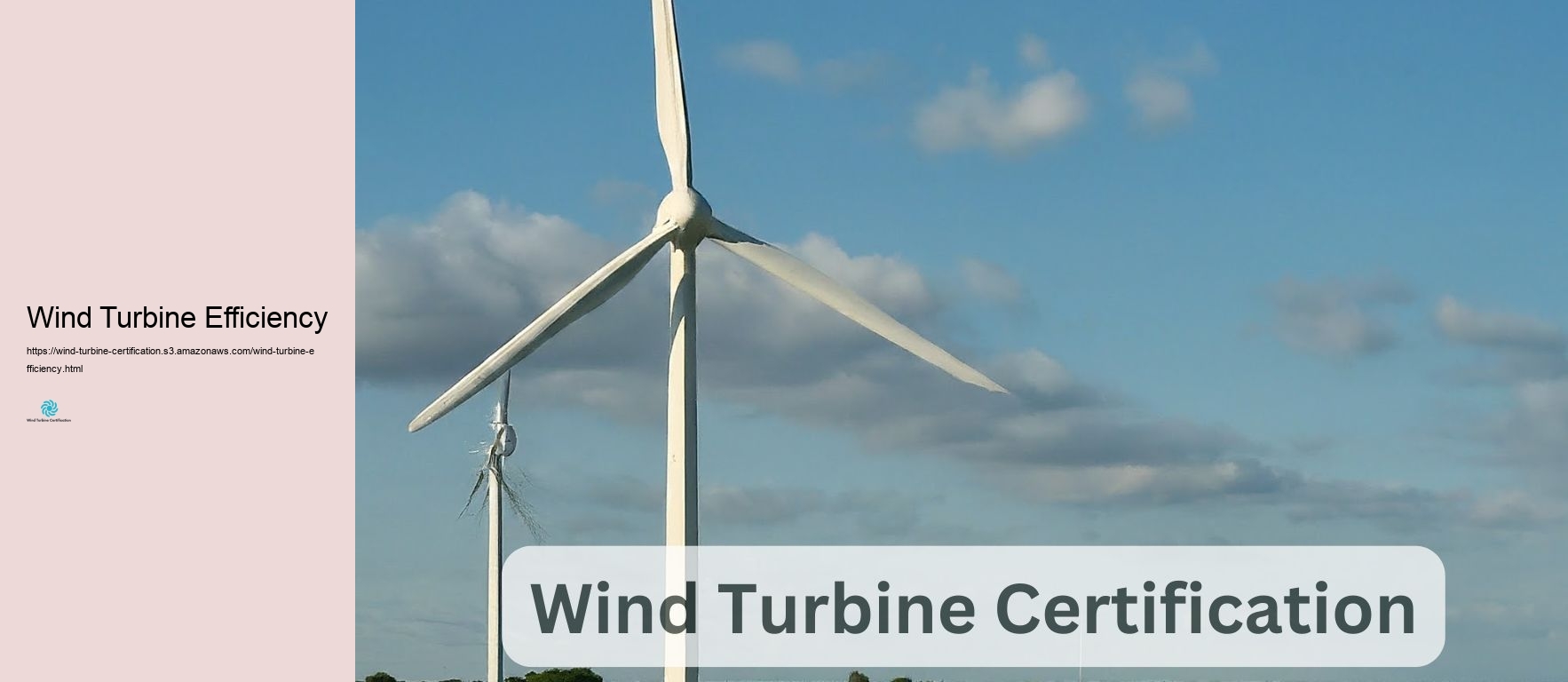

Wind turbine certification is a crucial process in the wind power market that ensures wind generators meet certain criteria for safety and protection, efficiency, and honesty. Wind Energy Policy Framework This complete certification procedure requires difficult testing and assessment of wind turbine styles, elements, and making procedures to confirm conformity with worldwide criteria and plans. Wind Turbine Efficiency The primary purpose of wind turbine certification is to offer guarantee to stakeholders, consisting of task designers, investors, and regulatory bodies, that a particular wind turbine design appropriates for its desired usage and can stand up to the ecological problems it will certainly experience throughout its operational lifetime. Certification helps in lowering dangers associated with wind energy jobs and promotes the total top-notch and reliability of wind turbine modern-day technology. There are countless kind of wind turbine qualifications, with type certification being one of the most regular and substantial. Kind certification verifies that a specific wind turbine layout is made, made, and taken a look at according to appropriate standards and standards. This procedure generally includes countless assessment components, such as style basis analysis, wind turbine style analysis, kind screening, manufacturing evaluation, and final analysis. The layout basis assessment assesses the environmental and functional problems under which the wind turbine is anticipated to run. This consists of aspects such as wind prices, disturbance, temperature level varieties, and various other site-specific problems. The wind turbine style examination checks out the turbine's structural, mechanical, and electrical components to make sure they please the asked for standards and can stand up against the expected lots and anxieties. Kind evaluating is a critical part of the certification procedure, consisting of physical examinations on a model or making unit of the wind turbine. These evaluations evaluate numerous elements of the turbine's performance, including power result, noise emissions, and protection functions. Lots measurements are in addition executed to verify the precision of the layout evaluations and simulations. The producing analysis guarantees that the manufacturing processes and quality assurance treatments suffice to frequently produce wind generators that satisfy the accredited design needs. This may include manufacturing facility examinations and audits of the manufacturer high quality administration system. In addition to kind certification, part certification is furthermore offered for major wind turbine elements such as blades, transmissions, and generators. Element certification follow a similar process to kind certification but focuses on private components instead of the entire turbine system. For small wind wind turbines, which are generally used in spread generation applications, certification procedures may be somewhat different yet still aim to confirm performance, protection, and toughness. Tiny wind turbine certification typically requires testing to information standards produced for smaller sized systems, such as those defined by the International Electrotechnical Commission(IEC)or nationwide requirements companies. Wind farm certification is another important aspect of the wind power field, particularly for large tasks. This procedure analyzes the entire wind farm, including the internet site issues, turbine suitability for the information area, help structures, and electric systems. Wind ranch certification helps make certain that the job all at once satisfies safety and efficiency needs and can be especially crucial for overseas wind ranches, which deal with distinctive barriers due to their marine atmosphere. Certification bodies play an essential duty in the wind turbine certification procedure. These firms are normally authorized by nationwide or worldwide authorities to carry out certification activities. Commonly recognized certification bodies in the wind power market include DNV GL, TÜV SÜD, and ClassNK, among others. These organizations utilize professionals in different fields connected to wind power technology to accomplish considerable evaluations and tests. The demands made use of for wind turbine certification are mainly developed by global companies such as the International Electrotechnical Compensation (IEC)and the International Company for Standardization(ISO). The IEC 61400 collection of requirements is specifically important for wind turbine certification, covering various elements of wind turbine layout, screening, and treatment. It's important to bear in mind that wind turbine certification demands can vary between countries and areas. While worldwide requirements supply a common framework, some countries may have additional or information demands that call for to be pleased. As an instance, in the USA, conformity with criteria established by Underwriters Laboratories (UL) may be essential for sure electric components of wind generators. The certification procedure can be taxing and costly, yet it supplies substantial advantages to makers and the sector as a whole. Licensed wind generators are more likely to be accepted by work developers and capitalists, as certification declines the regarded danger related to the innovation. Furthermore, certification can help manufacturers establish and attend to potential issues early in the growth procedure, potentially saving rates in the future. As wind turbine modern-day technology continues to be to evolve, with larger wind turbines and innovative designs being developed, certification procedures must also readjust. This consists of developing brand-new screening techniques and updating requirements to resolve occurring modern innovations such as drifting overseas wind generators. Wind turbine certification is a comprehensive and essential procedure in the wind power market. It sees to it that wind generators fulfill high needs of security and safety and security, effectiveness, and honesty, as a result
supporting the development and online reputation of wind power as a critical part of the international renewable energy mix. By supplying a common structure for reviewing wind turbine development, certification helps construct confidence among stakeholders and adds to the basic success and sustainability of wind power work worldwide.
Obtaining wind turbine certification is a difficult procedure made to make certain that wind turbines satisfy particular criteria and standards, guaranteeing their safety and security and security, effectiveness, and dependability. This detailed overview describes the crucial demands for obtaining wind turbine certification, highlighting the significance of each action in the process. Kind certification is an important demand for wind generators, validating that they are made, manufactured, and examined to comply with particular standards or requirements. This component analyzes the style anticipations and standards utilized in creating the wind turbine. It assurances that the design is based upon sound design principles and satisfies the called for standards. This activity evaluates the comprehensive design of the wind turbine, including its mechanical, electrical, and control systems. It validates that the format satisfies the technological needs and market requirements. Kind screening entails executing physical examinations on the wind turbine to validate its effectiveness and security and protection under many running problems. This includes screening for building sincerity, electrical performance, and sound degrees. This component analyzes the producing procedure to make sure that it complies with the accepted layout documentation. It consists of analyses of the production facility and quality control procedures. The last analysis clears up all previous analyses to validate that the wind turbine fulfills all certification needs. This stage involves a thorough testimonial of all records and test results. Optional examination components could include structure style exam, framework manufacturing assessment, and type attributes dimensions. These additional evaluations offer added assurance of the turbine's effectiveness and safety and safety and security. Part certification is in a similar way crucial, as it validates that significant components of a wind turbine, such as blades or major transmissions, accomplish information standards and technical requirements. The procedure for part certification. Turbine certification often adheres to international standards such as IEC 61400-22 and IEC 61400-1. These demands provide a structure for making sure that wind generators are made and assessed to satisfy international protection and efficiency standards. Conformity with these standards is essential for getting certification and making certain market acceptance. Certification bodies ought to be accredited by acknowledged certification bodies like DAkkS. This accreditation makes sure that the certification process is clear, expert, and adhere to global requirements. Visibility in the certification procedure is required for preserving depend on among stakeholders, including manufacturers, plutocrats, and consumers. Occupational Safety and Health Administration (OSHA) To take care of costs efficiently, certification bodies offer feedbacks documents that overview manufacturers through the whole treatment. These records help figure out potential problems at an onset, preserving time and sources by staying free from pricey revamp or redesigns. Clear communication and defined checkpoints warranty that the certification procedure remains reputable and cost-efficient. For wind cattle ranch certification, reviewing ecological troubles at the suggested setup site is vital. This analysis evaluates whether the toughness and security of the wind generators and their help structures suitable for the installment environment. This action guarantees that wind wind turbines can sustain local weather and various other eco-friendly factors.Thorough documents is a crucial need throughout the certification process. Manufacturers should supply thorough design paperwork, examination documents, and making documents. Certification bodies analyze these files to guarantee conformity with requirements and requirements. Right documents aids improve the certification process and reduces the hazard of delays or non-compliance problems. Reliable interaction between makers and certification bodies is essential. Certification experts should be easily offered for immediate assistance, providing clear reaction to questions and dealing with any troubles promptly. This level of service ensures that manufacturers can surf the center certification procedure smoothly, decreasing delays and misunderstandings. Raised time-to-market is a considerable advantage of getting wind turbine certification. By streamlining the certification process by means of clear checkpoints and effective interaction, manufacturers can bring their items to market a lot faster. This decreases packed danger in item innovation and gives an one-upmanship over traditional certification approaches [Getting wind turbine certification includes a collection of extensive evaluations created to make sure safety, performance, and integrity. From kind certification to element certification, adherence to global needs, certification visibility, expense control actions, ecological condition evaluations, comprehensive documents demands, customer assistance interaction, and time-to-market benefits all play important duties in this procedure. By acknowledging these necessary requirements, manufacturers can navigate the certification process correctly, eventually producing state-of-the-art wind generators that meet worldwide needs and market needs.
Empower your wind energy projects with certified wind turbines! 🌍💨 Our comprehensive certification ensures top-notch safety, performance, and reliability, helping you build a sustainable future with confidence.https://t.co/Xa7LZ7nRLC
— Turbine Training And Operation (@turbinetraine) August 20, 2024
Wind turbine certification plays a crucial obligation in the renewable energy market, providing assurance of safety and security and safety and security, effectiveness, and stability for wind power projects worldwide. As the global demand for neat power remains to broaden, certification has actually become a crucial process that advantages distributors, programmers, investors, and customers alike. At its core, wind turbine certification is a considerable analysis procedure that confirms that a turbine version meets details standards and demands.
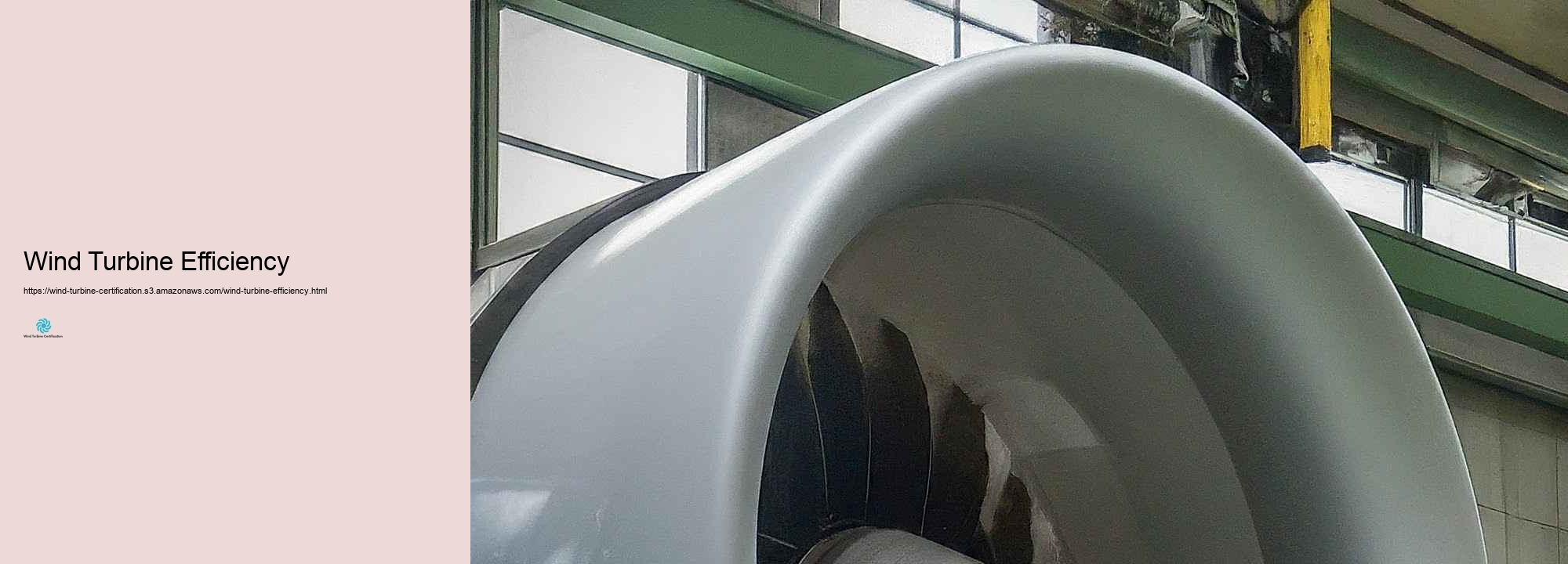
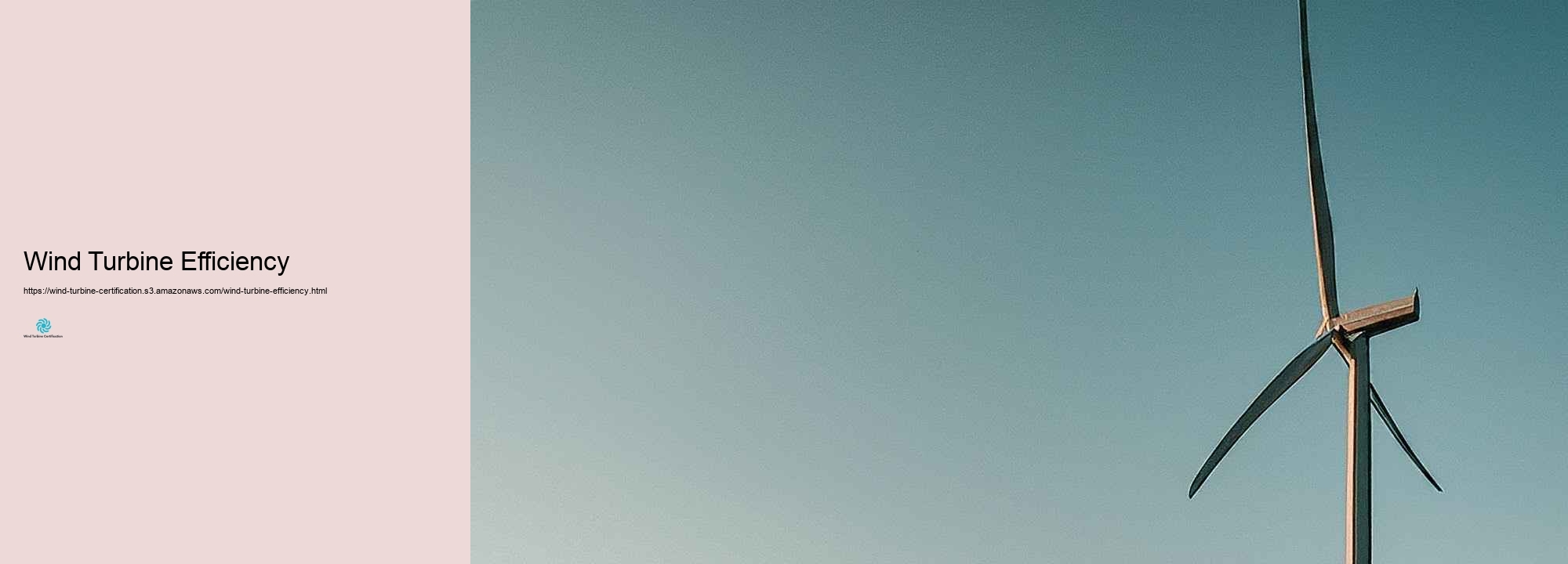
Wind turbine certification is a comprehensive treatment that guarantees wind generators are developed, produced, and examined to meet particular demands and requirements. This certification is essential for suppliers to program the high quality, security, and efficiency of their products. The process generally entails numerous vital actions, each playing an essential duty in the general certification. The primary step in the wind turbine certification procedure is the style basis analysis. This first stage entails evaluating the important presumptions, standards, and approaches utilized in the turbine'' ' ' s layout. Certification bodies like TUV, DNV-GL, or Bureau Veritas evaluate the style basis to assurance it align with sector requirements such as IEC 61400-22. This activity is important as it sets the structure for all succeeding analyses and examinations. Complying with the design basis evaluation, the following action is the design evaluation. In this phase, the certification body confirms that the real style of the wind turbine abides by the accredited style basis. This requires a detailed test of all technological components of the turbine, including structural components, electric systems, control systems, and safety and security attributes. The design examination guarantees that the turbine is in theory effective in withstanding the expected tons and running troubles throughout its intended life time. The manufacturing evaluation is the third major action in the certification treatment. This phase concentrates on assessing the quality control systems and making procedures utilized to generate the wind turbine. Certification bodies perform analyses of producing centers and evaluate high quality checking systems to make certain that the generators are being produced regularly and according to the licensed design. This action is essential for preserving the integrity of the turbine from layout to making. Kind evaluating is maybe the most extensive and noticeable component of the certification procedure. This action consists of a collection of field and laboratory tests to verify the turbine's effectiveness, safety and security and protection, and dependability. Secret examinations consist of power efficiency dimensions, tons dimensions, blade tests, and acoustic sound analyses. These examinations are executed on a version of the wind turbine layout under certification. The outcomes of these examinations are crucial in verifying the design evaluations and making sure that the turbine performs as anticipated under various operating issues. Aspect certification can be an added step in the procedure, particularly for important elements like transmissions, blades, or generators. This entails various evaluating and certification of these elements, which can be specifically crucial for huge or challenging turbine designs. Component certification can aid simplify the complete turbine certification process and supply added assurance of integrity. The final evaluation is the conclusion of all previous actions. In this phase, the certification body analyzes all the data, test outcomes, and evaluations from the earlier stages. They analyze whether all demands have been completely satisfied and if any type of issues determined throughout the process have'' been appropriately resolved . If everything is satisfying, the certification body concerns the last kind certification for the wind turbine style. It's crucial to note that certification doesn ' ' t end with the issuance of the kind certificate. Several certification plans include terms for regular safety and security and re-certification. This makes certain that the made wind turbines continue to satisfy the certified design and top quality requirements progressively. Providers might call for to undergo regular audits and potentially added screening to keep their certification. For wind ranch jobs, there's generally an extra activity of task certification. This involves examining simply exactly how the certified turbine models will certainly execute in the particular issues of a planned wind farm site. Job certification considers elements like community wind conditions, terrain, grid link demands, and foundation styles. Throughout the certification procedure, clear interaction in between the turbine distributor and the certification body is critical. Regular seminars and progression testimonials aid warranty that any type of issues are identified and taken care of rapidly, preventing hold-ups in the certification timeline. Suppliers need to be prepared to supply considerable records at each phase of the treatment. The timeline for wind turbine certification can vary considerably depending on the complexity of the turbine design, the preparedness of the producer, and the information certification system being abided by. It's not uncommon for the whole procedure to take 12-18 months and also much longer for brand-new or intricate designs. Costs connected with certification can be substantial, consisting of fees for the certification body, expenditures of model. design manufacturing for screening, and expenses pertaining to the countless tests and analyses.
While the procedure can be prolonged and pricey, it provides required assurance to stakeholders in the wind power market, from providers and designers to plutocrats and regulatory authorities. As wind power remains to play a considerably crucial role in the international power mix, the laborious certification treatment stays a keystone of the industry development and success.
When it comes to wind turbine professional qualifications, a number of reputable organizations usage programs that are typically identified in the sector. These certification bodies play an important role in establishing and maintaining criteria for wind turbine service technicians, guaranteeing they have the called for abilities and experience to job safely and successfully in this swiftly expanding area. One of one of the most noticeable certification bodies is the American Wind Energy Company (AWEA). The AWEA offers a comprehensive Wind Turbine Specialist Certification program that is really related to in the market. This certification covers a variety of subjects, including safety and security and protection procedures, electrical systems, mechanical systems, and hydraulics. The AWEA certification procedure usually includes completing a training training course and passing an extensive examination. Numerous companies in the wind energy sector like or require professionals to hold this certification, making it a beneficial credential for work growth.
needs of their target business or regions. Wind Turbine Efficiency By getting accreditations from reliable bodies and dedicating to reoccuring education and learning and finding out and ability development, wind turbine service technicians can location themselves for success in this vibrant and expanding market.
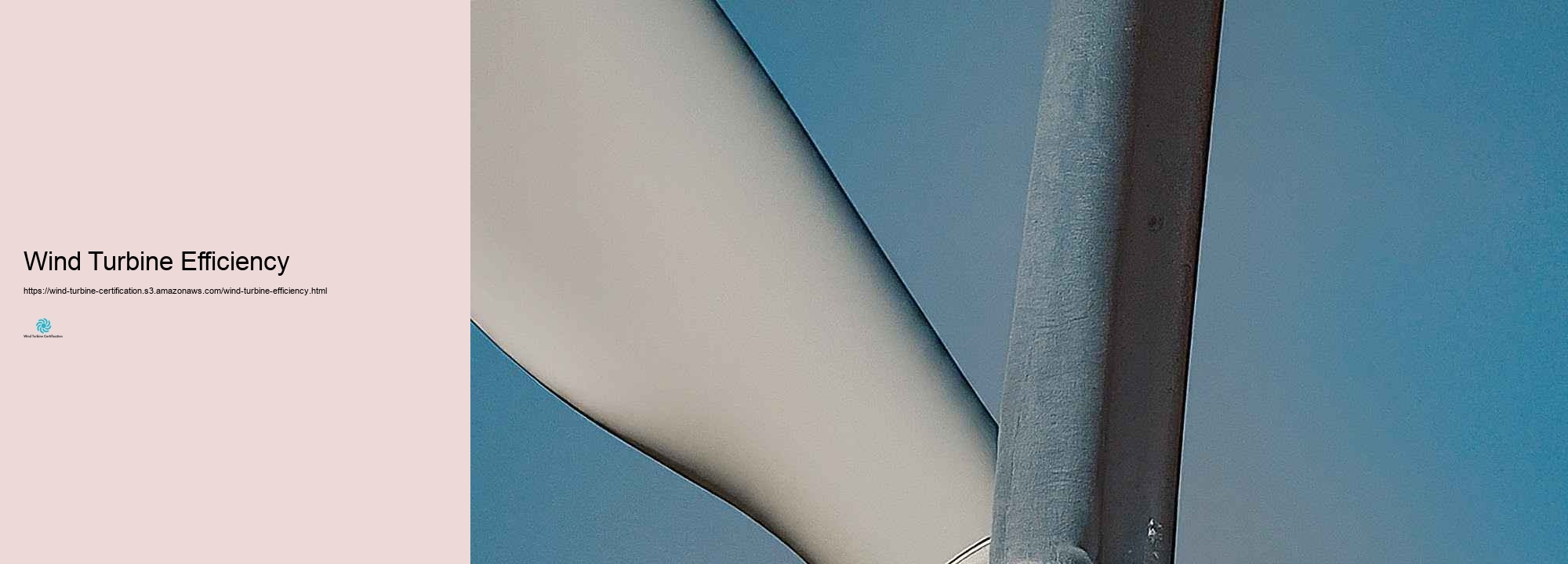
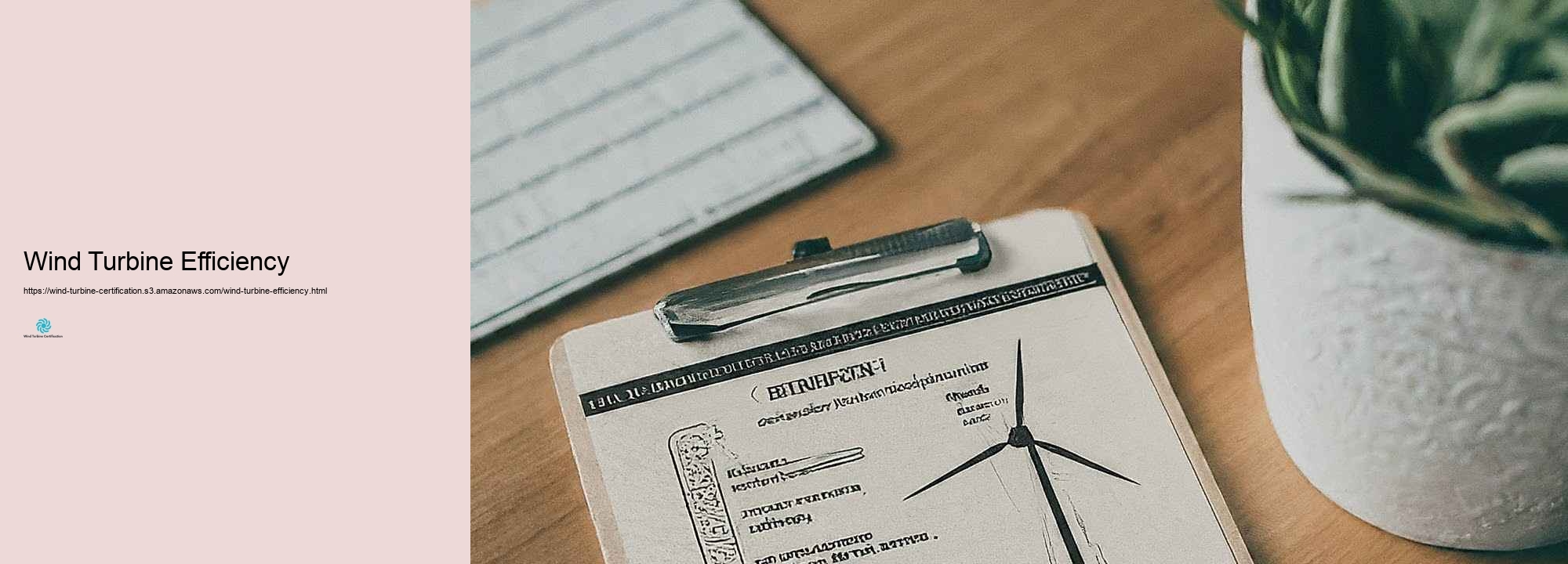
Wind turbine certification plays a vital role in making sure the safety and security and conformity of wind power systems, adding substantially to the sector growth and public authorization. This comprehensive procedure includes different aspects of wind turbine design, manufacturing, and procedure, all focused on reducing dangers and making the most of performance in the difficult setups where these frameworks are released. At its core, wind turbine certification involves verifying that a turbine fulfills specific standards and needs well-known by regulative bodies and sector companies. These standards cover a variety of facets, including architectural stability, electrical systems, control devices, and environmental impact. By adhering to these requirements, manufacturers and vehicle drivers can program their dedication to safety and dependability, which is vital for getting the rely on of plutocrats, insurance coverage providers, and the public. Among the primary concentrates of wind turbine certification is structural safety and security and safety. Wind wind generators are subjected to extreme climate condition and require to stand up to high winds, disturbance, and in many cases, seismic task. Certification procedures include considerable testing and evaluation of the turbine's architectural elements, such as the tower, nacelle, and blades. These examinations replicate various lots conditions that the turbine may experience throughout its operational life time, seeing to it that it can sustain these stress without falling short. Blade certification is a particularly important element of this treatment. Wind turbine blades go through huge stress and anxieties and must keep their security over millions of cycles. Certification for blades involves both repaired and vibrant load testing, together with exhaustion testing to imitate long-term usage. Advanced approaches such as ultrasonic scanning and acoustic exhaust testing are commonly used to find any type of interior issues or weak points in the blade framework. Electrical system certification is an additional vital element of wind turbine security. This includes examining the generator, power electronics, and grid link systems to warranty they please safety and security and safety and security requirements and can operate accurately under different issues. Certification around additionally solves concerns such as electromagnetic compatibility, ' protection versus lightning strikes, and the capacity to safely shut down the turbine in instance of grid failings or different other emergency circumstances. Control system certification concentrates on the software program application and hardware that manage the turbine's procedure. This consists of assessing the turbine ' s ability to reply to transforming wind issues, maintain optimal power outcome, and carry out protection treatments when required. Certification around often includes substantial evaluating of the control solutions under various substitute situations to see to it durable and respectable efficiency. Ecological consistency is a considerably important element of wind turbine certification. This includes examining the turbine's sound emissions, darkness flicker effects, and prospective result on wild animals, especially birds and bats. Certification procedures in this field aid guarantee that wind generators can exist side-by-side sympathetically with their bordering atmosphere and satisfy local legislations connecting to ecological monitoring. For overseas wind generators, certification takes on extra measurements because of the extreme marine setting. This consists of examining the turbine's resistance to rust, its capacity to hold up against wave great deals and marine advancement, and the honesty of subsea frameworks or drifting frameworks. Offshore certification additionally resolves certain safety and security fears pertaining to marine procedures, such as availability for maintenance staff members and emergency scenario activity treatments. The certification procedure frequently entails a number of phases, beginning with a layout evaluation.
The wind power market has expanded drastically over the previous couple of decades, driven by the boosting requirement for renewable resource resources. As the market expands, the importance of making sure safety, integrity, and performance of wind wind turbines has really wound up being exceptionally vital. International certification bodies play an important function in this procedure by establishing and carrying out criteria that assurance the top quality and safety and security and protection of wind generators. This brief article discovers the essential international certification bodies involved in the wind power field and their obligations in ensuring conformity with international standards. The Worldwide Wind Organisation (GWO) is a non-profit industry association began by leading wind turbine manufacturers and operators. GWO's main objective is to achieve an injury-free office in the wind turbine field with the application of typical international standards for safety and security training and emergency situation therapies. GWO standards are generated by the market, for the market, guaranteeing that they are functional and reliable in enhancing protection and maintaining workforce growth. GWO materials different training demands, consisting of Requirement Security and security Training( BST), Criterion Technical Training(BTT), and Advanced Rescue Training(ART ). These criteria are created to ensure that wind turbine specialists have the vital skills and comprehending to do their job safely and properly. Wind Turbine Efficiency Certification bodies like NSF International Strategic Registrations (NSF-ISR) and ClassNK offer GWO certification to training carriers, ensuring that they fulfill the required standards and take advantage of suitable equipment in an excellent environment. UL Solutions is another recognizable certification body in the wind energy market, acknowledged around the world for its experience in safety and security clinical study. UL Solutions gives credentials for offshore drifting wind generators, which are winding up being increasingly essential as the industry relocates towards a lot deeper waters. Their certification solutions include kind certification, part certification, and grid code compliance certification. These certifications verify that wind turbines are produced, recorded, and made in uniformity with certain demands and web site troubles, guaranteeing safety, integrity, and efficiency. UL Solutions also gives turbine life extension remedies, helping proprietors make enlightened options regarding operations, maintenance, and repair service to optimize the value of operating wind assets. Their involvement in various national and global committees in addition emphasizes their commitment to developing the future of wind energy with much safer and more protected advancement. ClassNK is a well-established certification body that gives options based on the worldwide training demands developed by GWO. ClassNK provides certification for training carriers based upon all GWO training requirements, including BST, BTT, ART, and specialized training courses like Blade Repair service Training. Qualified training companies should carry out annual checking audits and recertification audits every 2 years to protect their certification. This difficult procedure ensures that training satisfies the greatest feasible requirements, including in an extra secure and much more skilled labor force in the wind turbine sector. NSF-ISR is amongst the initial North American certification bodies to supply GWO certification to training provider. Their auditors are professionals in the wind turbine sector and can anticipate issues that could affect the audit experience. Certification demonstrates that training companies execute training according to GWO criteria utilizing the necessary tools in an excellent environment. Licensed training vendors are thorough on the WINDA data source, supplying visibility to wind turbine owner drivers, manufacturers, and sector contractors trying to find training firms. Wind Energy Curriculum Worldwide certification bodies play a critical duty in guaranteeing conformity with international criteria in the wind energy market. They established and enforce laborious needs that cover various facets of wind turbine design, production, installment, and treatment. These standards ensure that wind generators are safe, trustworthy, and accomplish effectively under different environmental issues. For instance, kind certification confirms that a wind turbine type is established, tape-recorded, and made in uniformity with certain requirements and web site problems. Component certification relates to considerable structural, mechanical, and electric parts of wind wind turbines, confirming that they accomplish ideal requirements and technical demands. Grid code conformity' certification warranties that wind generators please nationwide and global grid codes, facilitating their mix right into power systems. Among the key duties of global certification bodies is advertising security within the wind turbine sector. By setting usual global standards for security training and emergency circumstance treatments, these bodies assistance in lowering the threat of injuries and casualties amongst wind turbine experts. As an example, GWO's BST includes modules such as emergency treatment, hand-operated dealing with, fire comprehending, operating at elevation, and sea survival. These components outfit experts with necessary skills to manage emergency situations successfully. Certification bodies in addition assistance labor force growth by systematizing entry-level training across the industry. This standardization assists make certain that brand-new specialists have a regular degree of proficiency and skills, which is crucial for protecting high safety and security requirements and operational efficiency. Lots of GWO participants have standard 30 % or even more of their entry-level training, showing the effect of these needs on manpower innovation. Worldwide certification bodies aid in market accessibility for wind turbine makers by providing identified credentials that are approved worldwide. UL Solutions certifications, as an example, are recognized by governing bodies around the globe, making it possible for vendors to gain access to global markets a lot more easily. This recognition accelerates the rate to market for brand-new wind turbine modern-day innovations, adding to the growth of the renewable energy sector.Global certification bodies such as GWO, UL Solutions, ClassNK, and NSF-ISR play an important role in making sure compliance with around the world standards in the wind power industry. By establishing extensive requirements for safety and security training, element high quality, and grid combination, these bodies advertise safety and security and safety and security, reliability, and performance in wind wind turbines. Their accreditations enhance market get to for manufacturers while sustaining workforce advancement via standardized training programs. As the wind power market remains to advance, the task of these certification bodies will absolutely remain to be crucial in driving advancement and making certain that renewable resource technologies meet the greatest feasible criteria of safety and security and efficiency.
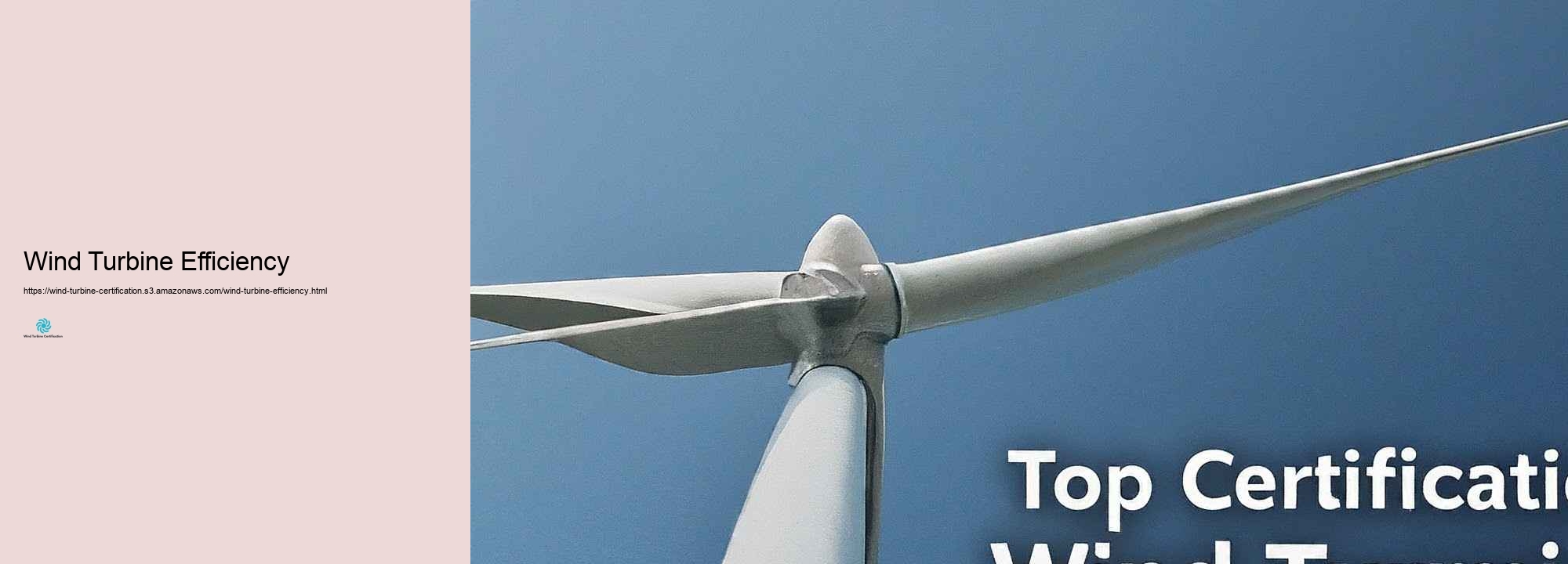
Wind Turbine Certification is a formal recognition that a technician or wind turbine system meets specific industry standards. It ensures safety, efficiency, and compliance with regulations, which is crucial for operating within the renewable energy sector.
Basic requirements include completing relevant training, gaining hands-on experience, and passing exams that test knowledge of wind turbine systems, safety protocols, and operational procedures.
The time required to become certified varies, typically ranging from a few months to over a year, depending on the program and the individual's prior experience.
Organizations such as the Global Wind Organisation (GWO), American Wind Energy Association (AWEA), and International Electrotechnical Commission (IEC) provide Wind Turbine Certification.
Obtaining Wind Turbine Certification enhances your credibility as a professional, opens up job opportunities in the wind energy sector, and ensures you are equipped to meet industry standards and safety requirements.